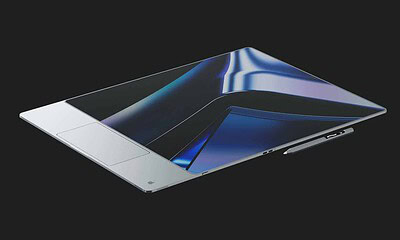Apple
I was going to get a new MacBook Pro this month, but I’m holding off for Apple’s ARM options instead
Guess my 2015 13-inch MacBook Pro will have to suffice for now.

Just a heads up, if you buy something through our links, we may get a small share of the sale. It’s one of the ways we keep the lights on here. Click here for more.
My main work laptop is a 2015 13-inch MacBook Pro, and it has served faithfully since purchasing it all those years ago. It replaced some clunker of an HP laptop, and I’ve never looked back. Sure, my desktop is a Windows 10 monster, but that’s mainly for games. Lately, the MacBook Pro has been showing its age. I mean, it’s nothing major, just opening new tabs take an age, and the battery isn’t what it once was.
I was about to order a new 13-inch MacBook Pro to replace it since Apple finally got rid of the stupid keyboard and went back to the new old better design of scissor-switches. I mean, battery life is better, the screens are better, there are the new 10th Gen chips from Intel that are substantially faster than the dual-core i5 that’s in my current model. Sounds like a slam dunk, right?
Well… that was before I saw the news about Apple putting ARM chips into an upcoming MacBook, instead of the Intel chips that it uses currently. I recently used an iPad Pro as my main work computer and the biggest thing I took away from that is that iPadOS is the thing holding back Apple’s CPUs. No longer are ARM chips a low-powered, low-power solution for mobile devices only, they’re perfect for laptops as well.
Think of ARM processors as a different way of doing the processing needed to run your device. The A-series chips that power iOS devices use the instruction set from ARM, which also runs on pretty much every smartphone sold nowadays since Intel gave up trying to make their own low-power chips.
The crucial part of this equation for Apple is control. The company already makes its own chips for mobile devices using the ARM instruction set, which power every other device Apple makes, except for Macs. Extending that to Macs makes every part of the Mac product stack under their control, without relying on external vendors.
Just think of the possibilities for ARM-powered MacBooks. Think the iPad Pro has long battery life? Imagine a MacBook Pro with all-day (and possibly all-night) battery life. Maybe Apple will take this opportunity to add a touchscreen to the MacBook range. Heck, this could even be the moment of convergence when macOS and iOS gain interoperability. Imagine that – running iOS apps natively on macOS, because it’s all written to work on ARM processors.
So, the upshot of this is that I’m holding on to my dual-core i5 powered MacBook Pro for a little while longer. Sure, it lags when browser windows open, and it really doesn’t like running virtual machines, but it still works and unless that changes in the interim, it’ll be upgraded to an ARM-equipped MacBook Pro at some point in the future.
What do you think? Are you excited for the next generation of the MacBook Pro? Let us know down below in the comments or carry the discussion over to our Twitter or Facebook.
Editors’ Recommendations:
- Apple filed a virtual group selfie patent in 2018 that is perfect for social distancing
- Apple could be looking into subscription bundles for things like Apple TV+ and Apple Music
- Everything we know about the iPhone 12: Leaks, rumors, release date and more
- Apple’s new 13-inch MacBook Pro is so freaking magical it is powered by rainbows and leprechaun blood
Just a heads up, if you buy something through our links, we may get a small share of the sale. It’s one of the ways we keep the lights on here. Click here for more.































